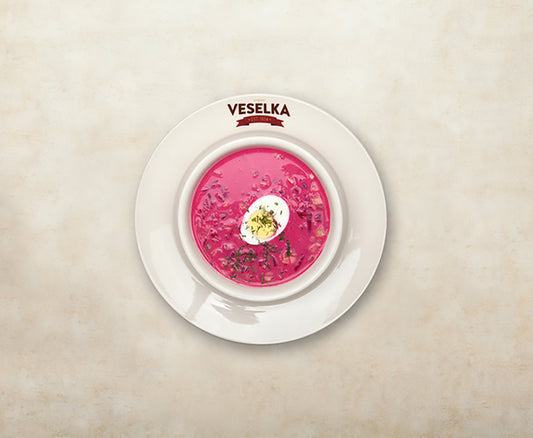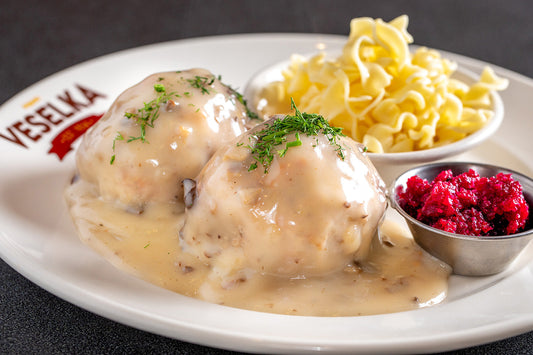The culinary world is an intriguing journey where foods across cultures share resemblances yet maintain their distinctive identities. Pierogi and ravioli are two such creations: dumplings that echo similar constructs but bear unique tastes, traditions, and textures. If you've ever pondered the differences between pierogi and ravioli, we invite you to join us on a flavorful journey of culinary exploration.
Historical Origins
Dive into the rich histories of these beloved dumplings—Pierogi from Eastern Europe and ravioli from Italy. Learn how each has evolved while maintaining its cultural roots.
Brief History of Pierogi
Originating in Central and Eastern Europe, pierogi have a storied past steeped in tradition. Various theories trace their roots back to Ukrainian influences. Today, they are an enduring treasure in Ukrainian kitchens and restaurants, including Veselka, where skilled chefs craft thousands daily.
Pierogi in Ukrainian Christmas traditions
In Ukraine, Christmas Eve dinner is a big deal, with 12 different Ukrainian dishes on the table, one for each of the 12 apostles. Because it's a tradition not to eat meat on Christmas Eve, the pierogi usually have fillings like cheese and potato, sauerkraut and mushrooms, or fruit. These dumplings are a crucial part of the holiday, showcasing the rich food traditions of Ukraine.
Brief History of Ravioli
Unlike pierogi, ravioli call Italy home. They are believed to have been introduced during the Middle Ages and have since become an integral part of the Italian culinary landscape in pasta dishes from countless regions.
Ravioli in Traditional Italian Feasts
In northern Italy, ravioli grace the table during big family feasts. Filled with everything from meat to pumpkin, they often come dressed in rich sauces like meaty ragù. Ravioli is a cherished element of Italian family gatherings, especially during Christmas.
Cultural Significance
Discover the impact that pierogi and ravioli carry beyond the dinner table, serving as symbols of national identity and familial bonding in Ukraine and Italy, respectively.
Pierogi: A cultural cornerstone in Ukraine
In Ukraine, these stuffed dumplings are often the stars of family gatherings and major celebrations, serving as emblems of Ukrainian hospitality and warmth. They offer a culinary experience that feeds both the body and the soul, making them more than just food in the traditional sense.
Ravioli: Italy's culinary ambassador to the world
Ravioli have transcended their status as a mere dish in Italy to become a form of edible art. Each region in Italy offers its unique spin on these delicious stuffed pasta squares, varying the fillings and sauces to create distinctive culinary experiences.
Basic Ingredients
Ever wondered what goes into making these scrumptious pockets of joy? Let’s delve into the fundamental ingredients for pierogi vs ravioli.
Pierogi: Veselka's Classic Recipe
Veselka is a culinary institution in the heart of New York's East Village, where we've been serving our signature pierogi for decades. When we make pierogi, we follow a time-honored recipe that pays homage to Ukrainian traditions while embracing our community's diversity.
Our Pierogi Dough
- 1 large egg yolk
- 1 cup whole milk
- 1 tablespoon vegetable oil
- 3¼ cups all-purpose flour
Our Fillings
- 4 tablespoons unsalted butter
- 5 cups finely chopped onion
- 4 cups mashed potatoes (leftovers work too!)
- 4 ounces of farmer's cheese
- 2 teaspoons salt
- ¼ teaspoon freshly ground black pepper
To Assemble
- 2 large egg whites
- All-purpose flour, as needed
- Sour cream for serving
Veselka’s pierogi strikes the perfect balance between tender and robust, serving as an excellent canvas for our diverse pierogi fillings. We also seal each pierogi carefully with egg whites and offer sour cream on the side to enrich the overall dining experience.
ℹ️ Find out more about the difference between pierogi and potstickers.
Ravioli: Italy's Stuffed Pasta Icon
Regional traditions often shape ravioli’s ingredient list, however, an all-time classic recipe includes the following:
- For the dough: A blend of all-purpose flour, salt, a single egg, water, and a modest olive oil drizzle.
- For the filling: A base of ricotta, then layer in cream cheese, add in mozzarella and provolone subsequently; finalize with an egg and a scattering of dried parsley.
- For the sauce: Start with olive oil and garlic, incorporate basil pesto, continue with a splash of heavy cream, and top off with a sprinkling of grated parmesan and a dollop of marinara sauce.
The secret to perfect ravioli generally includes rolling out your dough thinly, cutting it into the preferred form—circles or squares—doling out the filling, and then meticulously sealing the edges.
Traditional Cooking Methods
Get acquainted with the authentic ways of cooking pierogi and ravioli. We'll focus on the traditional methods—like boiling—that make each dish true to its heritage.
How to Traditionally Cook Pierogi
At Veselka, we keep the traditional cooking method for pierogi, which is boiling. Once they float to the surface, you know that they’re ready to eat. If you enjoy a variety of textures, we also offer the option of sautéing or frying them briefly after boiling to add that irresistible crispy finish.
How to Traditionally Cook Ravioli
Ravioli share the first step with pierogi but distinguish themselves in the way they are presented. After boiling, ravioli are often paired with a rich and flavorful sauce. A final sprinkle of parmesan can be the cherry on top, elevating each bite to a culinary experience.
Dressing and Serving Styles
Curious about how to serve these dumplings? For pierogi, we take inspiration from our unique Veselka menu. For ravioli, it's all about the Italian sauces.
Toppings for pierogi: The Veselka way
- Sautéed onions
- Sour cream
- Applesauce
- Sweetened sour cream (For dessert pierogi)
Drawing inspiration from our Veselka recipe, the pierogi is often topped with flavorful sautéed onions and a hearty dollop of sour cream.
Sauces for Ravioli: The Italian way
- Marinara sauce
- Pesto sauce
- Creamy Alfredo sauce
- Parmesan cheese
In the case of ravioli, the sauce is a critical element. A final sprinkle of parmesan can be the cherry on top, elevating each bite to a culinary experience.
Health Benefits & Nutritional Content
Balance indulgence with knowledge as we break down the nutritional aspects of pierogi vs ravioli. Learn what each offers in terms of carbs, proteins, and more.
Nutritional Value of Pierogi
Pierogi are rich in carbohydrates, largely due to their primary ingredients of potatoes and flour. Incorporating cheese into the pierogi filling can provide a touch of protein. For even more protein, look towards our braised beef, or short rib pierogi. For those looking to create a balanced and nutritionally complete meal, we recommend pairing pierogi with vitamin and mineral-rich sides like fresh vegetables or a light salad. These not only amplify the flavor but also provide additional nutrients like vitamins A and C, as well as dietary fiber, making your pierogi meal both delicious and nourishing.
Nutritional Value of Ravioli
The nutritional makeup of ravioli is more variable and depends mainly on the type of filling and sauce used. However, like pierogi, ravioli is also rich in carbohydrates. When filled with cheese or meat, the protein content rises, and the type of sauce can introduce fats into the nutritional equation.
Frequently Asked Questions (FAQs)
Let's dive into some culinary questions about pierogi vs ravioli.
Not quite! While both are filled dumplings, they stand out in their ingredients, cooking styles, and the cultural stories they tell.
The key lies in sealing the edges well. Pierogi and ravioli edges are often sealed by pressing the edges together by hand.
Typically, you'll find the staples—flour and often eggs—in the dough for both pierogi and ravioli. It's like a blank canvas for culinary fun!
The Lingering Taste: What Makes Pierogi vs. Ravioli Unique?
In the grand debate of "pierogi vs ravioli", there's no winner, except for your taste buds. Both have unique stories, flavors, and places in the hearts of those who savor them. Whether you’re a food lover in Italy, a traveler in Ukraine, or a home cook anywhere in between, the world's culinary diversity is simply delightful. When that pierogi craving hits, there's no better place than Veselka, a Ukrainian restaurant, to satisfy your craving. Let's dig in, one delicious pierogi at a time!





